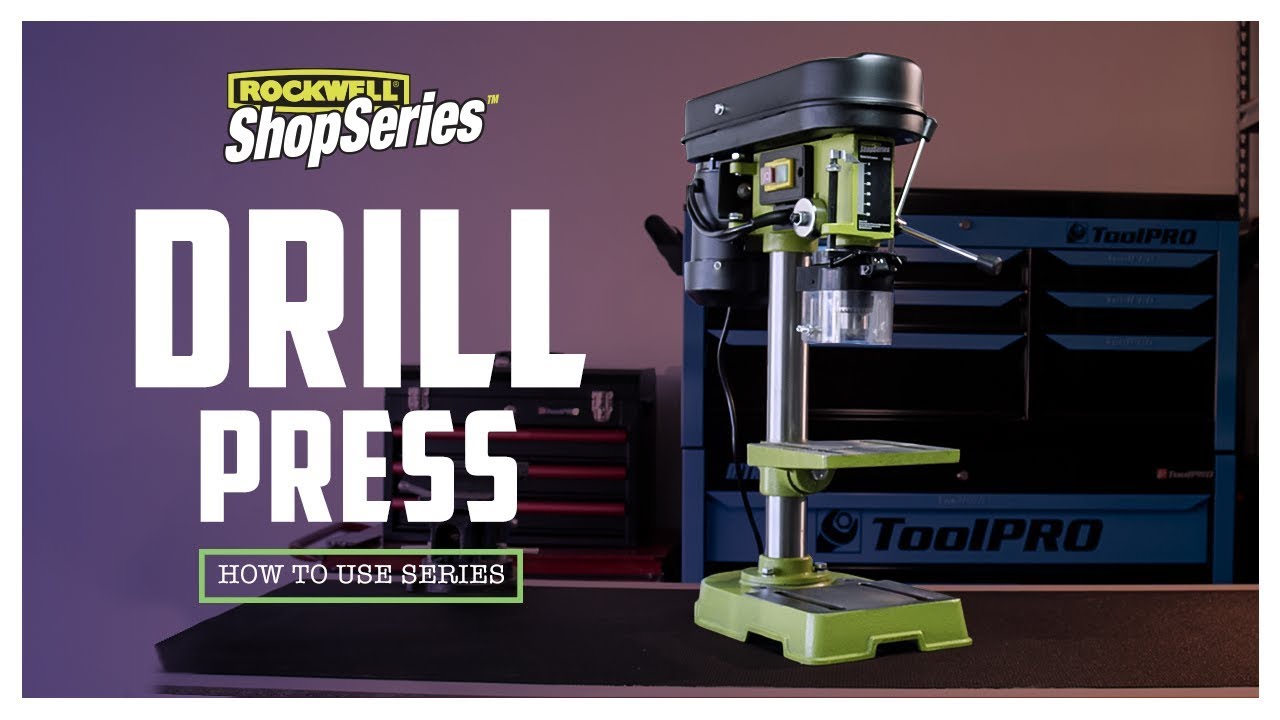If you’re serious about working with wood or metal, a drill press is an essential tool that can make your projects easier and more precise. Unlike handheld drills, drill presses are stationary machines designed specifically for boring holes in various materials. In this guide, we’ll explore everything you need to know about drill presses and how to choose the best one for your metalworking needs.
How Does a Drill Press Work?
A drill press consists of a rotating handle that controls the descent of a spinning mechanism called the spindle. The drill bit is held in a chuck at the end of the spindle. Unlike handheld drills that rely on the operator’s arm strength and steadiness, drill presses are designed for precision. The spindle can only move vertically, making it easier to create perfectly precise holes. Additionally, all drill press models have a depth stop for creating holes of consistent depth.
Choosing the Right Drill Press
When shopping for a drill press, there are a few key factors to consider:
Drill Press Type
There are two main types of drill presses: benchtop and stationary models. Benchtop models are smaller, lighter, and more portable, while floor models are heavier and offer more power, capacity, and features. Consider your workspace and mobility needs when deciding which type is right for you.
Drill Press Size
Drill presses have two important size elements to consider: swing and spindle travel. Swing is the distance between the machine’s central column and the spindle, multiplied by two. This determines the maximum width of material you can work with. Spindle travel refers to how deep the drill press can move downward as you rotate the handle. Consider your project requirements when choosing the size that suits your needs.
Drill Press Power
Assessing power is crucial when choosing a drill press. Calculate the wattage by multiplying the amp and volt figures displayed on the electrical nameplate. Higher wattage indicates more power and the ability to bore through tougher materials. Floor-model drill presses typically deliver around 1,000 watts, while benchtop models have less power.
Drill Press Speed
Most drill presses offer variable rotation speeds for efficient drilling in different materials. Higher-end models provide more speed options. Rotation speed is essential as harder materials require slower drill bit speeds. Benchtop models typically offer five to six speeds, while floor models may have up to 16.
Drill Press Features
Consider additional features such as the table movement, which allows adjustment for workpiece size. Some models also offer side-to-side tilting of the table for drilling at different angles. Look for models with LED lights or laser guides that assist in precise drilling. These features enhance the versatility and accuracy of your drill press.
Uses for a Drill Press
A drill press is a versatile tool with numerous applications in metalworking. Whether you’re building a coat rack, making wooden toys, sanding curved wooden parts, or working with metal, a drill press can greatly improve your results. It’s ideal for tasks like drilling dowel joints, cleaning metal parts with a wire wheel, or even boring holes for stair railings. The possibilities are endless, and you’ll find yourself reaching for your drill press more often than you expected.
FAQs
Q: Can I use a drill press for plastic or woodworking projects?
A: Yes, drill presses are suitable for plastic and woodworking projects in addition to metalworking. They offer precise drilling and can be equipped with accessories like sanding attachments for added versatility.
Q: What safety precautions should I take when operating a drill press?
A: When using a drill press, always wear safety goggles to protect your eyes from flying debris. Additionally, secure your workpiece firmly, use clamps if necessary, and avoid wearing loose clothing or jewelry that might get caught in the machine.
Q: Can I use a drill press with different types of drill bits?
A: Absolutely! Drill presses can accommodate various types of drill bits, including twist bits, spade bits, hole saws, and more. Ensure that the chuck on your drill press can securely hold the specific type of bit you intend to use.
Conclusion
A drill press is a valuable tool for metalworking enthusiasts and professionals alike. Its power, precision, and versatility make it a must-have in any workshop. By considering factors such as type, size, power, speed, and features, you can select the best drill press for your metalworking needs. So, start drilling with confidence and precision by investing in the best drill press for metal.
For more detailed information and recommendations on the best drill press for metal, visit Best Drill Press For Metal.

As the CEO of BestDrillPressforMetal.com, I take immense pride in our unwavering commitment to transformation and excellence in metalworking. I am driven and passionate about creating the best possible user experience for our customers and helping them achieve their goals with precision and innovation. With my guidance, we have established ourselves as a leader and trusted partner within the industry by leveraging cutting-edge technologies to push boundaries with incredible products that exceed expectations. We understand that metalworking is more than just a process; it is an art form made real through passion, dedication, and diligence—all of which embody our core values at BestDrillPressforMetal.com.

